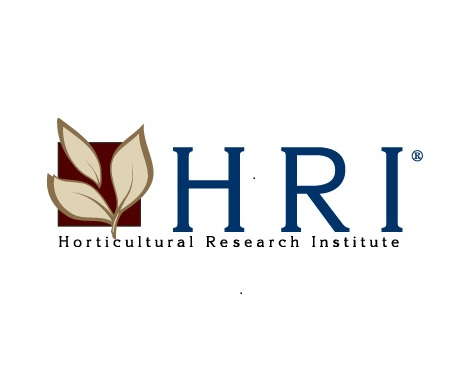Page Menu (Scroll down to find the following sections)
- Literature regarding the economic, environmental, and health and well-being benefits of plants and greenscapes
- Other popular websites summarizing the benefits of plants, nature, and greenscapes
- *** Online Report from the Texas A&M “Horticulture and Wellness” Brainstorming Event ***
Literature regarding the economic, environmental, and health and well-being benefits of plants and greenscapes:
- Economic, Environmental, and Health/Well-Being Benefits Associated with Green Industry Products and Services: A Review (Journal of Environmental Horticulture 29(2):96-103.)
- An Update of the Literature Supporting the Well-Being Benefits of Plants: A Review of the Emotional and Mental Health Benefits of Plants (Journal of Environmental Horticulture 37(1):30–38.)
- An Update of the Literature Supporting the Well-Being Benefits of Plants: Part 2 Physiological Health Benefits (Journal of Environmental Horticulture 37(2):63-73.)

- An Update of the Literature Supporting the Well-Being Benefits of Plants: Part 3 Social Benefits (Journal of Environmental Horticulture 37(4):136–142.)
- An Update of the Literature Supporting the Well-Being Benefits of Plants: Part 4 Available Resources and Usage of Plant Benefits Information (Journal of Environmental Horticulture 38(2):68–72. June 2020)
- An Update of the Literature Supporting the Economic Benefits of Plants: Part 1 Methods of Valuing Benefits (Journal of Environmental Horticulture 40(4):143–148. December 2022)
- An Update of the Literature Supporting the Economic Benefits of Plants: Part 2 Increased Property Values (Journal of Environmental Horticulture 41(1):14–26. March 2023)
These articles can be gleaned for benefits-related information to include in marketing materials and social media posts.
Other popular websites summarizing the benefits of plants, nature, and greenscapes:
- Center for Health and Nature – The mission of the Center for Health & Nature, a collaboration between Houston Methodist, Texan by Nature, and the Texas A&M Health Science Center, is to drive research to study the impact of nature on health with evidence-based programs that complement the full continuum of health care: prevention, treatment, and recovery.
- National Initiative for Consumer Horticulture – The Mission of the National Initiative for Consumer Horticulture is to grow a healthy world through the art, science and business of plants, gardens and landscapes.
- Green Plants for Green Buildings – Their purpose is to communicate the aesthetic, wellbeing, and economic benefits of nature in the built environment.
- Children and Nature Network – The C&NN library is one of the best I have seen. You can search by topic and each citation contains a 2-3 paragraph summary. And it’s all about the impacts of nature, outdoor learning, and green spaces on kids!
- Plant Benefit Factsheets produced by The Green City – These factsheets are 4-color and are excellent ready-to-use marketing materials.
- All-America Selections / National Garden Bureau – Their Facebook page is full of 4-color postings about the benefits of plants.
- Green Cities: Good Health – Click on a research theme for Fast Facts that are perfect for social media sharing.
- Nature Sacred – Another great resource on the power of nature to human health.
- America in Bloom – This website talks about the benefits of local beautification efforts to Main Street businesses and the entire community.
- Trees.com – Excellent study on the mental health benefits of plants during the pandemic.
- Human Dimension of Urban Forestry & Urban Greening – This site focuses urban forestry and has an exhaustive list of the benefits of urban forests to humans.
- Landscape Performance Series – An online set of resources to help designers, agencies, and advocates evaluate performance, show value and make the case for sustainable landscape solutions.
- ASLA Health Benefits of Nature – Click on a health topic and you can find specific research studies addressing how nature influences that particular health issue.
- Biophilic Cities – Their short videos in the Films section are perfect for sharing the benefits of being in nature.
- Terrapin Bright Green – One of the best resources for biophilic design information. One of my favorites is the Economics of Biophilia report.
- American Horticultural Therapy Association – Publishes the AHTA Journal of Therapeutic Horticulture
- Therapeutic Landscapes Network – a knowledge base and gathering space about healing gardens, restorative landscapes, and other green spaces that promote health and well-being.
*** October 2023 “Horticulture & Wellness” Brainstorming Event. ***
Representatives from all across the Texas A&M System working in this subject matter area came together for a half-day brainstorming session to: (1) share a short summary of their mission and direction, as well as major research, outreach projects, or other banner programs; (2) ideate regarding potential collaborations among the entities represented to mitigate redundancies and/or capture synergies; and (3) identify unique or novel ways to enhance knowledge transfer and/or educate clientele as to the benefits of plants and greenscapes in improving mental and physical health. To set the stage for the meeting, Dr. Jay Maddock presented the Ellison Chair Distinguished Lecture the day prior entitled “Exploring the plant, greenspace, and human health connection.” (link provided below)
Distinguished lecture by Dr. Maddock to frame the issue
Introduction to the project
Outcomes of the brainstorming session
-
- All 207 unique ideas generated and add-on notes
- The top 3 rated ideas from each table (summarized on the flipcharts)
- The final list of ideas after consolidating those with similar themes and removing duplication
- Full directory of potential internal partners identified to date
- Participants who stated interest in collaborating on the final list of ideas
-
- Appendix A: Original brainwriting worksheets
- Appendix B: Original flipcharts with green dots
- Appendix C: 1-page primer on plants and wellness benefits
- Appendix D: News release regarding the brainstorming session